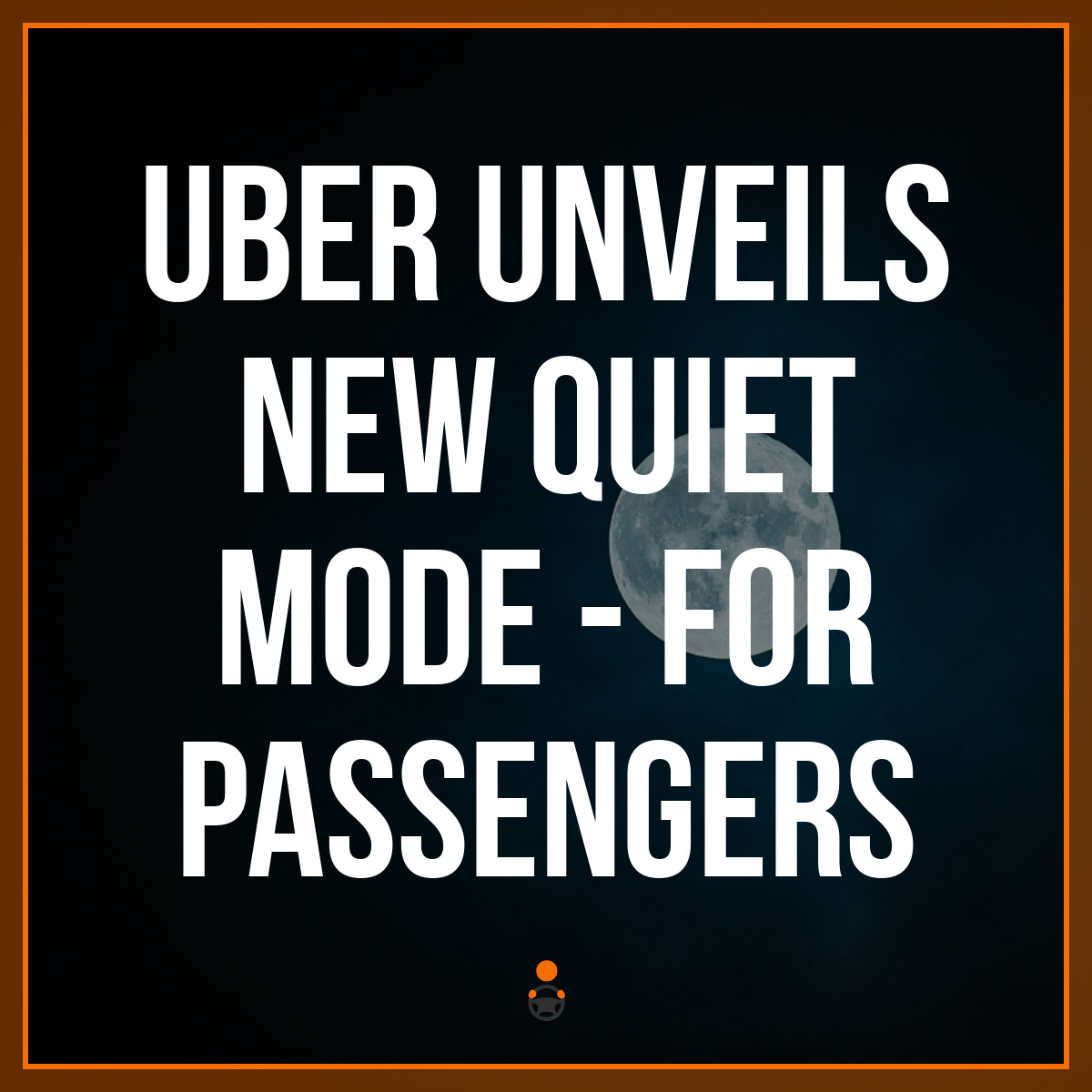Much like Uber’s new ‘Quiet Mode’, this week in rideshare news is much quieter than previous weeks have been. Senior RSG contributor John Ince covers the new ‘quiet’ mode, a potentially devastating blow to the independent contractor debate, and how drivers are (not) gaming the system.

Uber offers ‘Quiet Mode’ so you don’t have to talk to the driver, but it’ll cost you extra [USA Today]
Sum and Substance: Ever put on your AirPods to keep a chatty Uber driver from annoying you during your trip? You may have an option to put them away. Uber just launched a new preference in the app that allows you to specify what level of conversation you’d like to have during your Uber ride. Starting on Tuesday in the U.S., riders can choose between “Quiet preferred” and “happy to chat” in the app.
Or, if you don’t care one way or the other, you can just leave the setting at “No preference.” The driver will get a heads-up before you’re picked up, so they know what type of mood you’re in.
The setting is offered only for premium Uber rides, which means you’ll only get the choice before you take Uber Black or Uber Black SUV trips. …
My Take: Uber seems to be returning to its roots here – providing an elite service to an elite clientele. As much sense as this makes for both drivers and passengers, there’s something about it that bothers me. As the rich have fortified the moat that separates them from the riff-raff – like us, drivers.
For me the conversations with the passengers were always one of the most compelling aspects of this gig. Somehow I find it difficult to swallow that Uber should offer this kind of specialized service and still be able to get away with calling drivers independent contractors. (See below)
Uber Drivers Are Contractors, Not Employees, Labor Board Says [The New York Times]
Sum and Substance: … The move, outlined by the board’s general counsel in amemorandum released Tuesday, deals a blow todrivers’ efforts to band together to demand higher pay and better working conditions from Uber and its main rival in the ride-hailing business, Lyft. It is the first major policy move the board has made concerning the so-called gig economy under President Trump.
Contractors lack the protection given to employees under federal law — and enforced by the labor board — for unionizing and other collective activity, such as protesting the policies of employers. As a practical matter, the conclusion makes it extremely difficult for Uber drivers to form a union.
The board’s general counsel, Peter B. Robb, who wasappointed by Mr. Trump, does not have purview over other laws applying to employees, such as minimum wage and overtime protections.
Still, had Mr. Robb’s office found that drivers were employees rather than contractors, the decision could have put pressure on the regulators who enforce such laws to reach the same conclusion.
The labor costs of companies like Uber and Lyft would probably rise 20 to 30 percent, according to industry estimates, if regulators or courts forced them to treat drivers as employees. Both businesses have seen their stock prices fall after recent public offerings amid questions about their financial prospects.
My Take: For those who question whether the consequences of elections filter down to the small guys like us, take note of this decision, which could have far-reaching consequences for all gig economy workers. Here, a Trump appointee, to what many might see as an inconsequential position, dropped a bombshell.
The reasoning of the decision, like the self-serving justifications that are often peddled by politicians, lacks understanding of what being an Uber or Lyft driver is really like.
Could Uber, Lyft drivers trick the apps to increase surge pricing? Experts say ‘probably’ [USA Today]
Sum and Substance: If you use ride-hailing apps, you’ve seen it happen. You hop on the Uber or Lyft app one moment to check out the price of a trip, then you look back a few minutes later to discover that surge pricing is in full effect – doubling or tripling the amount a ride would normally cost.
Most often, consumer demand is likely the culprit behind the expensive fare. During periods of excessive demand when there are more riders than drivers or when the dearth of drivers on the road increases customer wait times, ride-hailing apps increase fares.
However, a few years back, researchers discovered that drivers can also have a hand in bumping up the amount of money you pay for a trip. And some say, given the tense contractor-versus-employee debate, Uber and Lyft drivers could still be doing it.
My Take: The premise behind this alleged practice is that drivers are sufficiently well organized to coordinate action on something like this. From what I’ve read on driver message boards and Facebook groups, I’d deem this highly unlikely. If any of you have information to counter this, please do share with us.
Readers, what do you think of this week’s round up?
-John @ RSG




